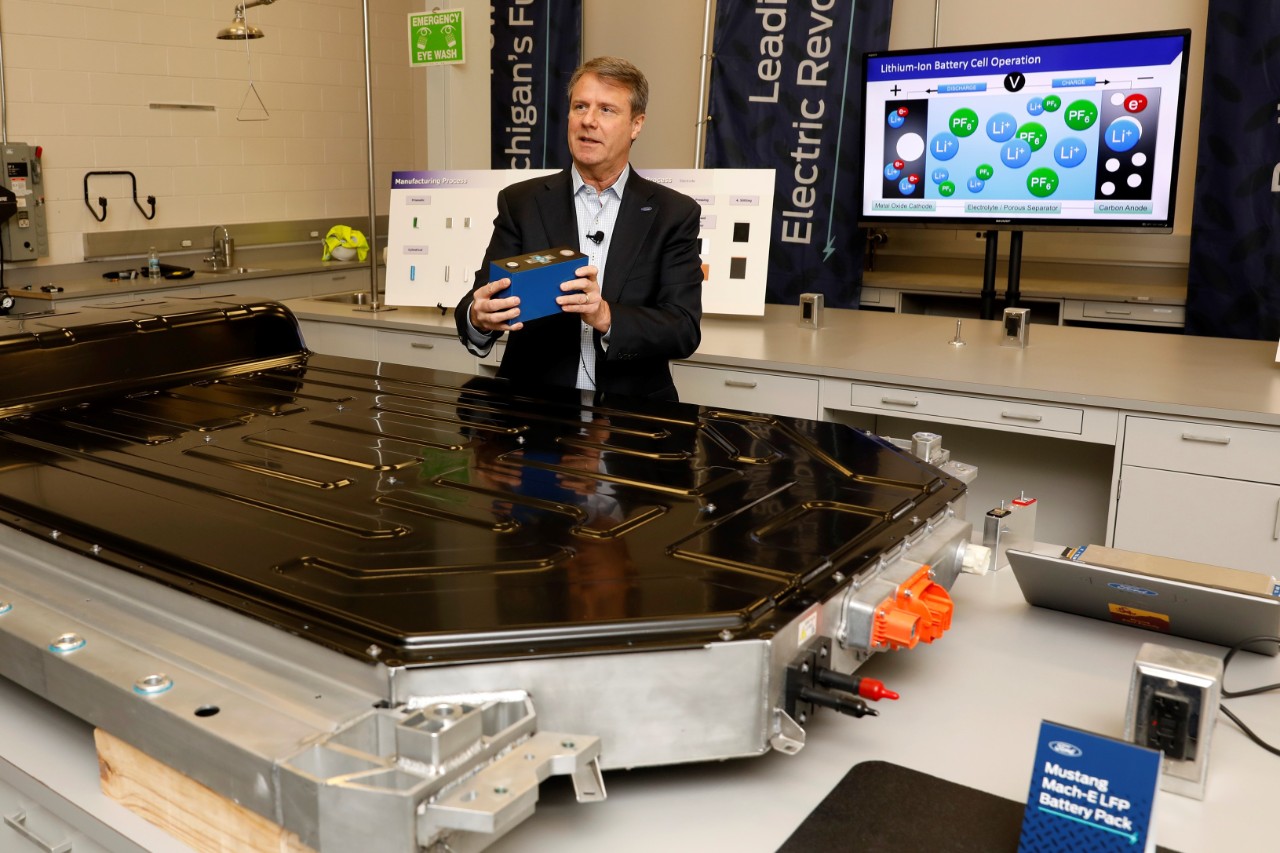
Ford said it planned to invest $3.5 billion to build what it said would be the country’s first automaker-backed lithium iron phosphate (LFP) battery plant, offering customers a second battery technology as part of Ford’s EV lineup.
The plant – called BlueOval Battery Park Michigan – could begin production in 2026 at a site in Marshall, Michigan.
Ford also said it signed a deal with China-based Contemporary Amperex Technology Co., Limited (CATL). Under terms of the agreement, a Ford subsidiary would manufacture the battery cells using LFP battery cell knowledge and services provided by CATL.
Ford has existing battery supply collaborations with SK On and LG Energy Solution. The LFP battery would be in addition to the nickel manganese cobalt (NMC) option Ford currently offers.
LFP batteries use lithium iron phosphate as the cathode material, and a graphitic carbon electrode with a metallic backing as the anode. Because of their lower cost, high safety, low toxicity, long cyclelife and other factors, LFP batteries are finding a number of roles in vehicle use, utility-scale stationary applications, and backup power.
Chinese manufacturers have held a near-monopoly on LFP battery production, but that is changing. A number of patents began to expire in 2022, creating openings for manufacturers to enter the market. Estimates are that LFP production could surpass NMC chemistry in 2028.
Since 2019, Ford and its battery tech collaborators have announced $17.6 billion in investments in electric vehicle and battery production in the United States, part of the automaker’s plan to invest over $50 billion in electric vehicles globally through 2026.
Ford said it is working to deliver an annual run rate of 600,000 electric vehicles globally by the end of 2023 and 2 million globally by the end of 2026.
Ford said it would introduce LFP batteries on Mustang Mach-E this year and F-150 Lightning in 2024 to increase production capacity, with a goal of reducing wait times for customers.
The new Michigan battery facility is expected to add around 35 GWh per year of new battery capacity for Ford in the U.S. initially. The output could power around 400,000 vehicles.